If you go for a walk in the countryside, the chances are you'll see a bird of prey either hovering up in the sky or perched within a tree canopy, but it can often be difficult to determine which species you're looking at.
In our ID guide, we take a closer look at some of Britain's most iconic birds of prey, offering information on how to identify them, what they eat, when they are most active and the best places to spot them.
If you're interested in birds, you may also like to check out our guides to bird migration, how to identify owls and seabirds to look out for on Britain's coasts.
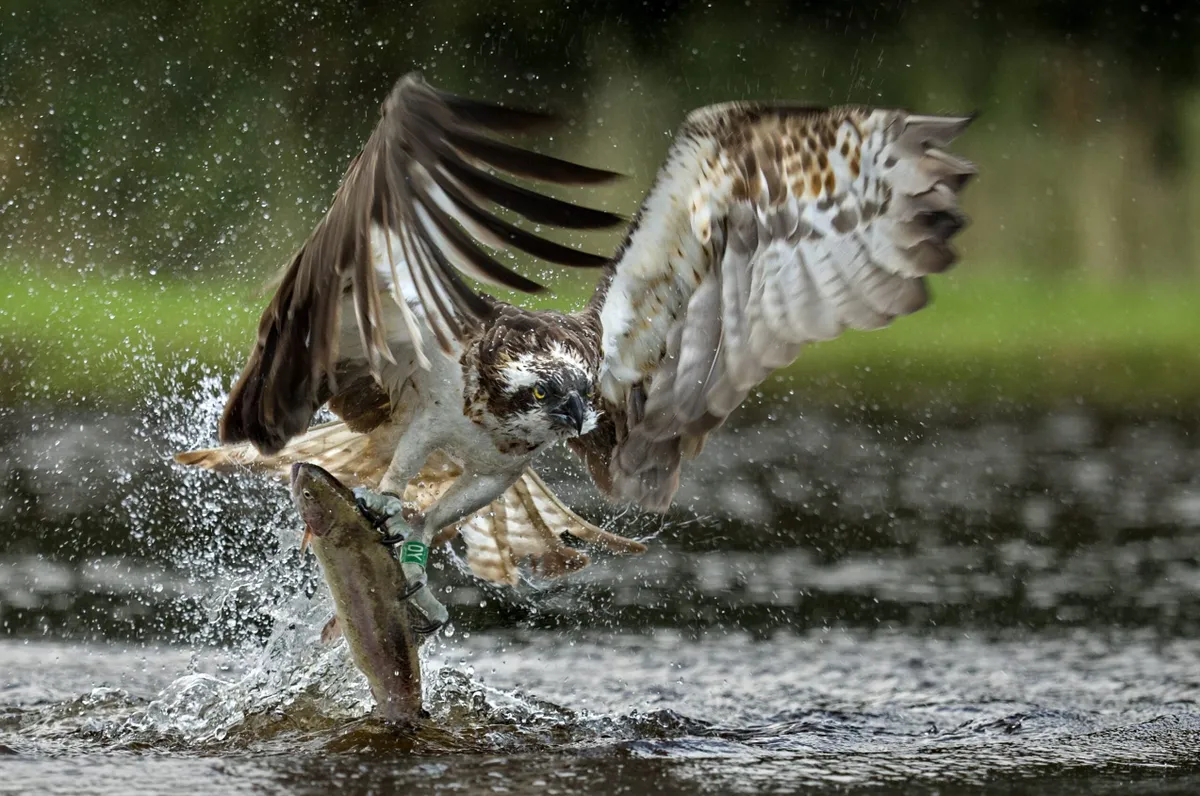
What is a bird of prey?
Birds of prey are birds that feed on animal flesh. They belong to the raptor family, defined by their talons and a hooked bill, and reside in almost every part of the UK, from the lowlands of southern England and the coasts of Wales, to the great ridges, mountains and islands of the Scottish Highlands.
Why do birds of prey hover?
Some birds of prey hover in the air above their hunting grounds to spot prey. Kestrels are perhaps the best-known for hovering and can remain almost motionless in the air, with the slight tweak of a wing or tail to maintain their position. They use oncoming wind to provide them with uplift, meaning they don't have to beat their wings.
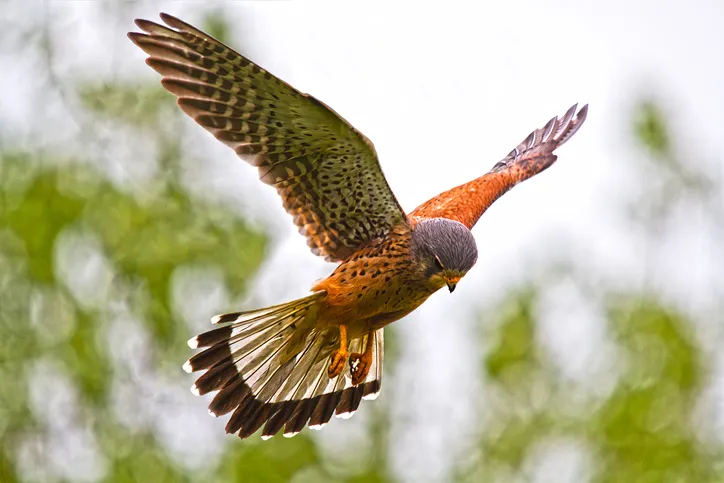
How to identify birds of prey
Osprey, Pandion haliaetus
Bigger than a buzzard, the osprey has pale underparts, long wingtip feathers and dark patches where the wings bend. It can be mistaken for a gull. In September, this raptor migrates to West Africa for the winter. Mostly eats fish. Ospreys can be found primarily in the far north of England – including the Lake District – and Scotland.

Red Kite, Milvus milvus
This elegant bird of prey has a uniquely forked tail and angular wings that give it a rakish silhouette. It has a buoyant flight style, constantly altering its wing and tail pitch to execute sudden changes of direction. Red kites eats carrion, invertebrates and scraps.
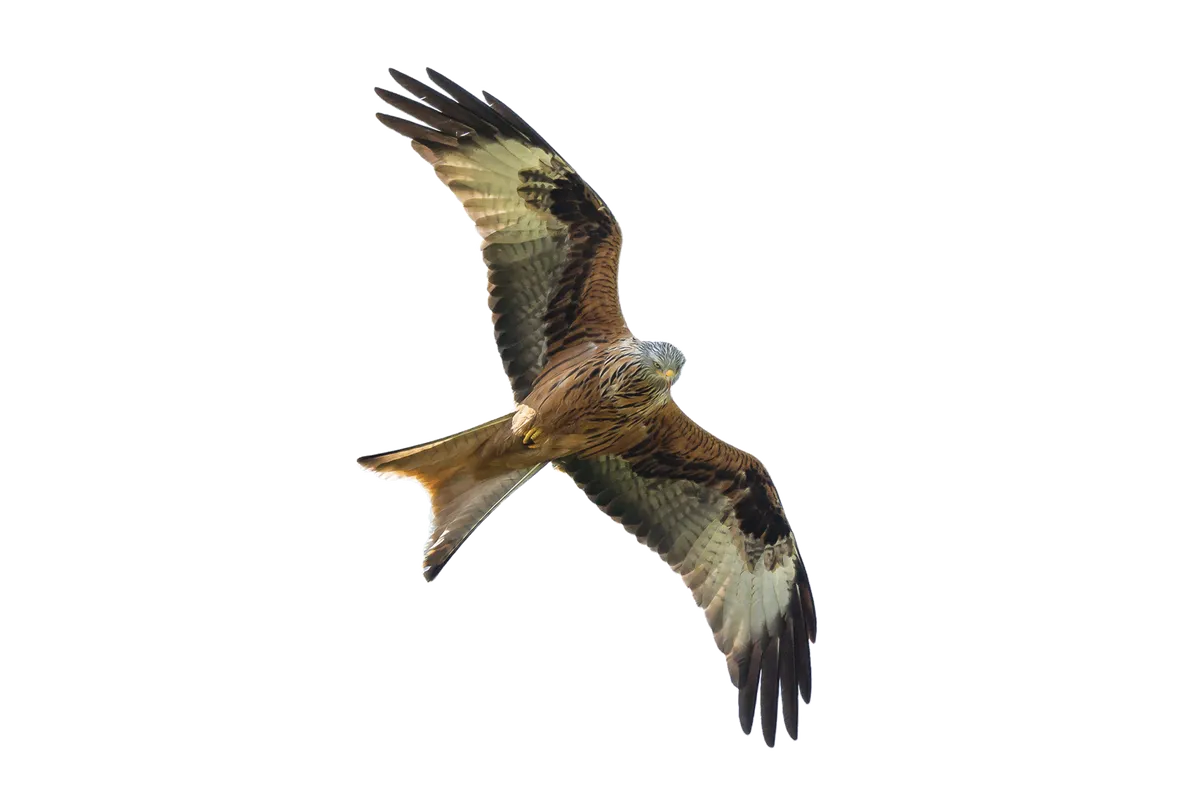
Marsh harrier, Circus aeruginosus
A buzzard-sized bird of prey with a long tail. The marsh harrier flies with its wings lifted up in an obvious ‘V’ shape, though this can be hard to see from below. Patrolling low over reedbeds, it keeps its head down to scan for prey. Eats small mammals and birds.

Hen harrier, Circus cyaneus
After wintering on coasts and marshlands, the hen harrier breeds on uplands often on driven grouse moorlands that are managed for shooting. It is Britain's most highly persecuted bird of prey for its perceived role in hunting grouse though it will take mammals or small birds as it hovers and quarters for prey low to the ground. The courtship display – known as a sky-dance – is a rare but magical spectacle of early spring. The female – known as a ring tale for the markings on her upper tail – is brown, the male a ghostly bluish grey. Buzzard-sized.
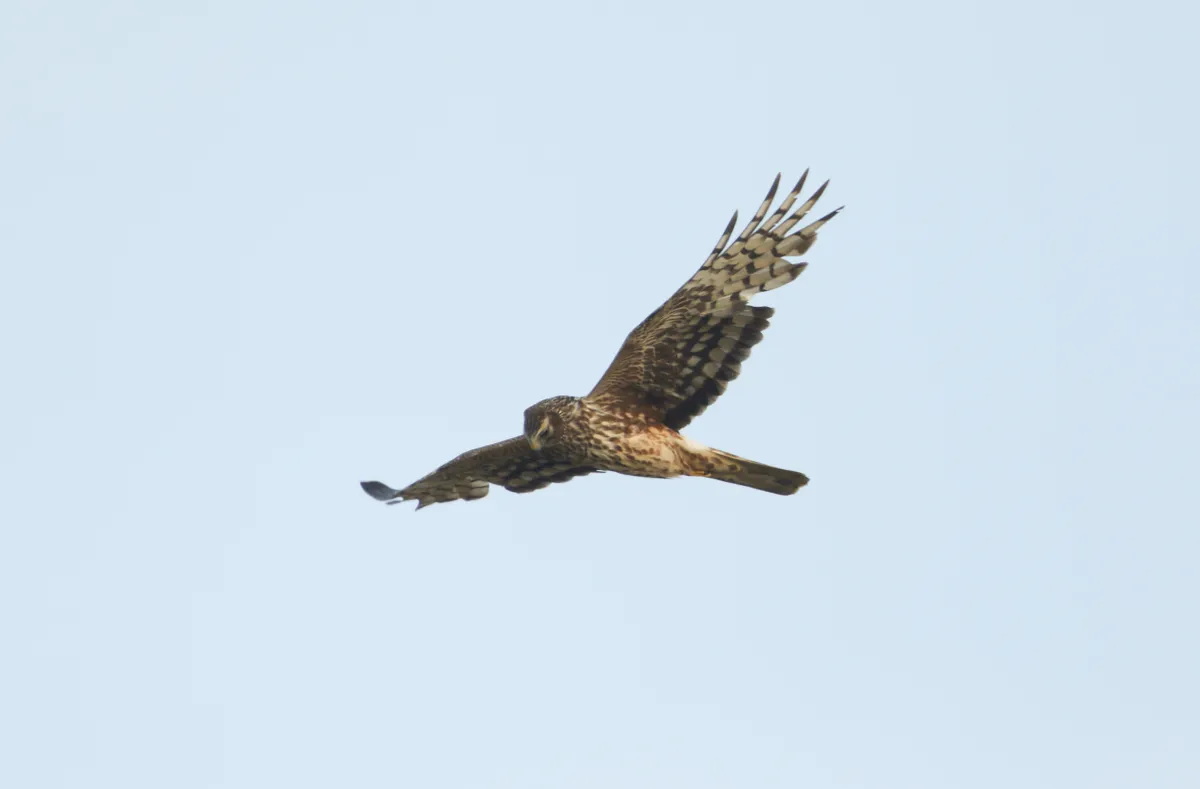
Buzzard, Buteo buteo
Britain’s commonest bird of prey, the buzzard is the species most often seen soaring. It wheels about in the air on broad wings, with its tail fanned out and wingtip feathers widely splayed. Eats birds, mammals and carrion.

Honey buzzard, Pernis apivorus
Another buzzard-sized hawk but not closely related, the honey buzzard migrates in small numbers (fewer than 100 pairs) to Britain's forests every spring. Feeding initially on frogs and small mammals, it turns its attention to wasp nests as the summer progresses by tracking the flights of individual insects back to their nests. Listen to our Plodcast – ringing honey buzzard chicks in a Welsh forest

Peregrine, Falco peregrinus
This powerful, chunky falcon, resembling a large kestrel but with a shorter tail, has stiff, rapid wing beats. The peregrine falcon frequently soars with wings spread, but when hunting makes dramatic dives after prey. Eats medium-sized birds.
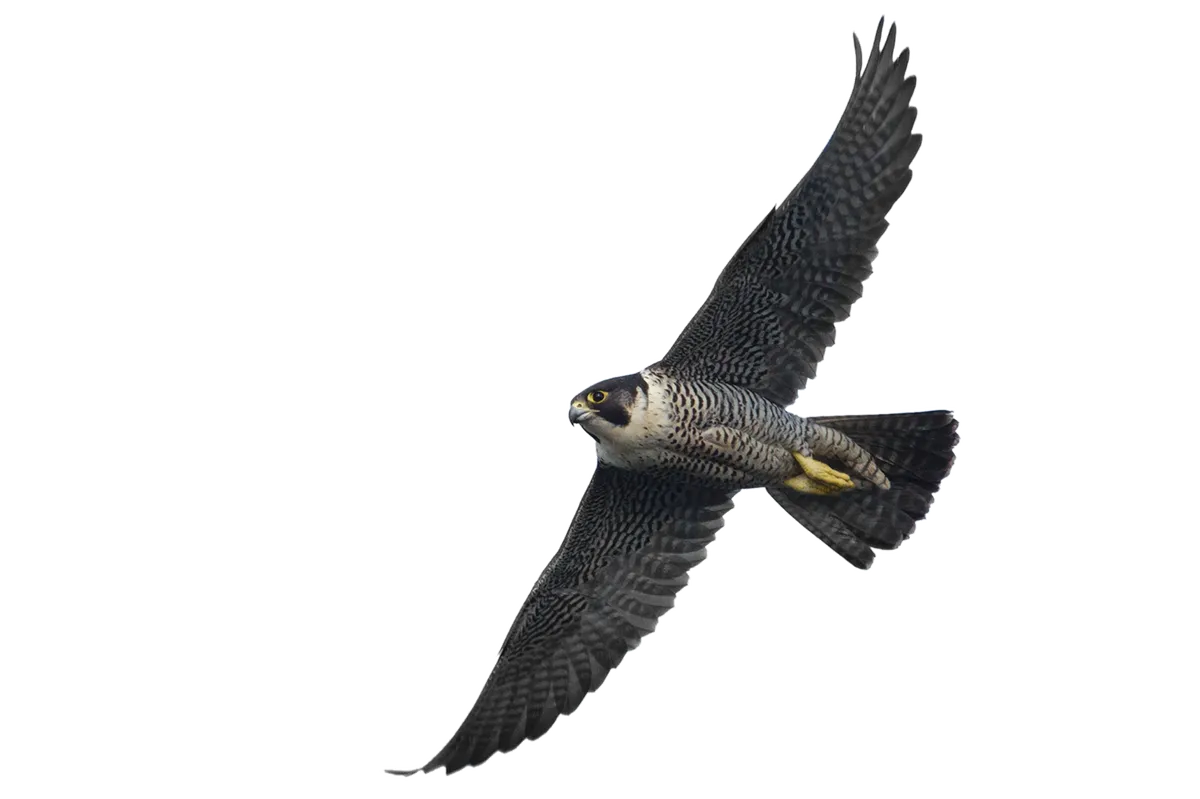
Hobby, Falco subbuteo
Looking like a giant swift, the hobby has very pointed, narrow, swept-back wings, heavily streaked underparts and red ‘trousers’. It seldom soars. Eats dragonflies, swallows and martins.
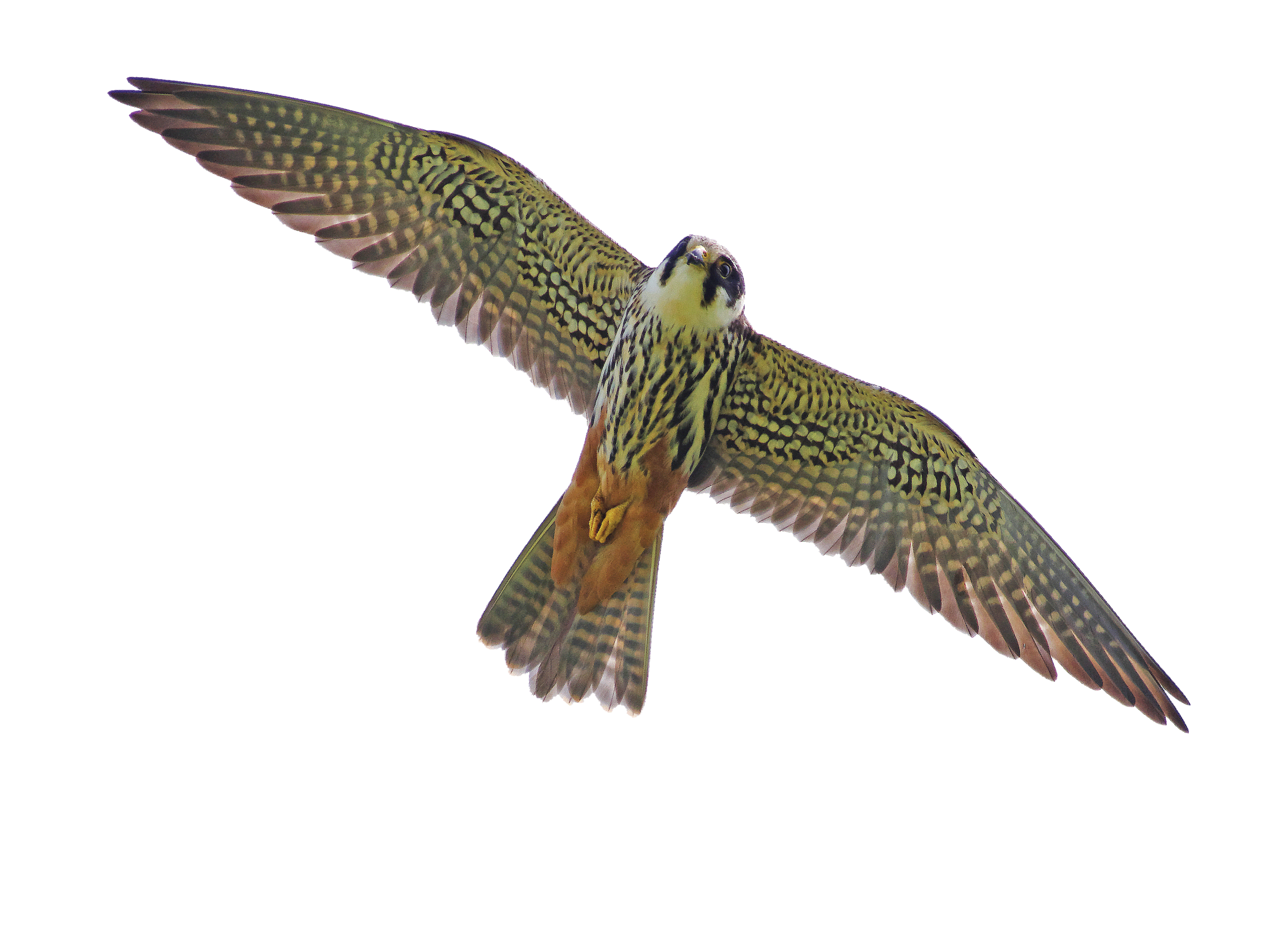
Sparrowhawk, Accipiter nisus
The sparrowhawk has an extremely long tail and broad wings with long feathered wingtips like ‘fingers’. It hunts mainly at hedge-height, but also circles high in the sky. Female is much larger than male. Eats small birds.
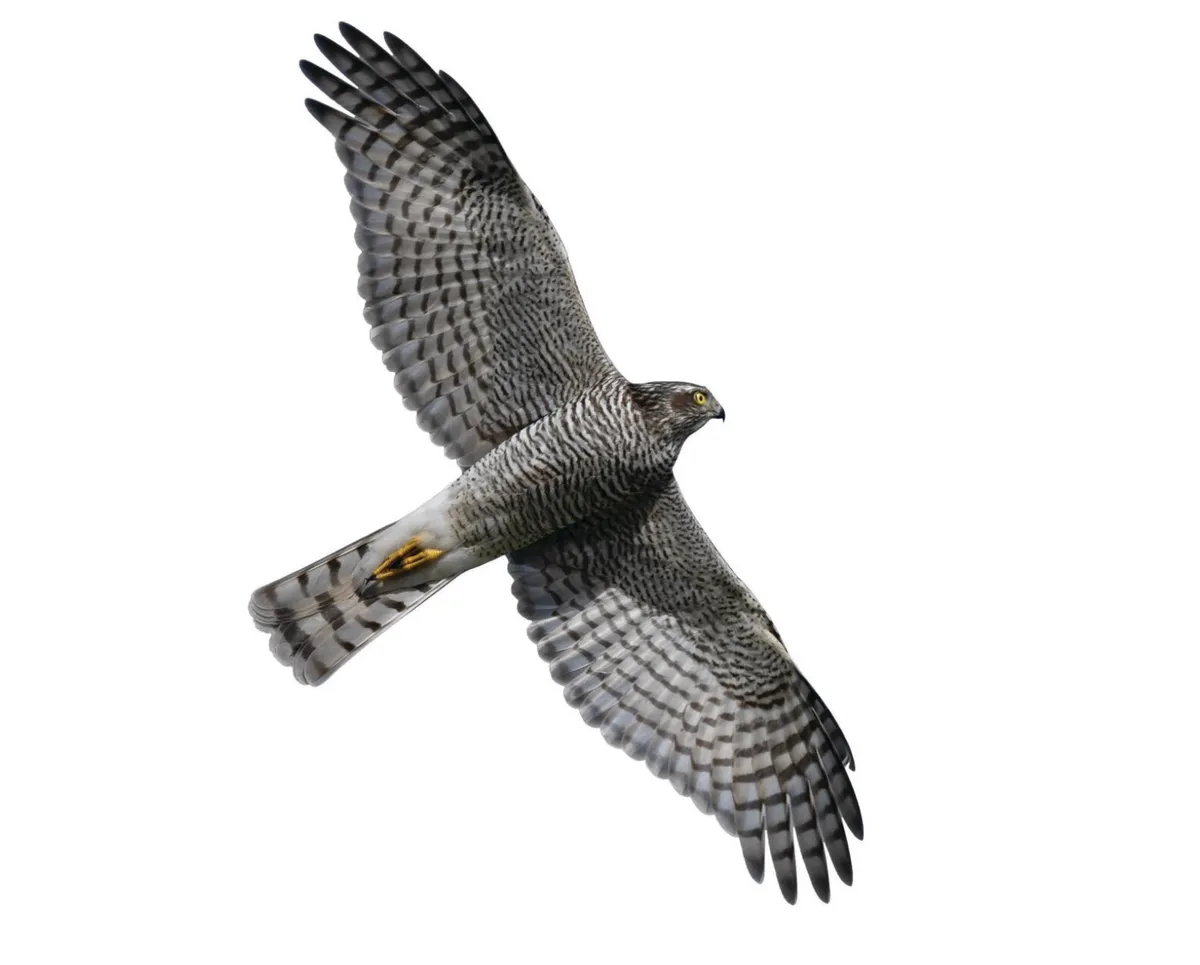
Kestrel, Falco tinnunculus
With the classic falcon silhouette, the kestrel has very long pointed wings and a long tail. It adopts a variety of flight styles, including fast pursuit, soaring in circles and hovering. Has a diets of voles and mice.
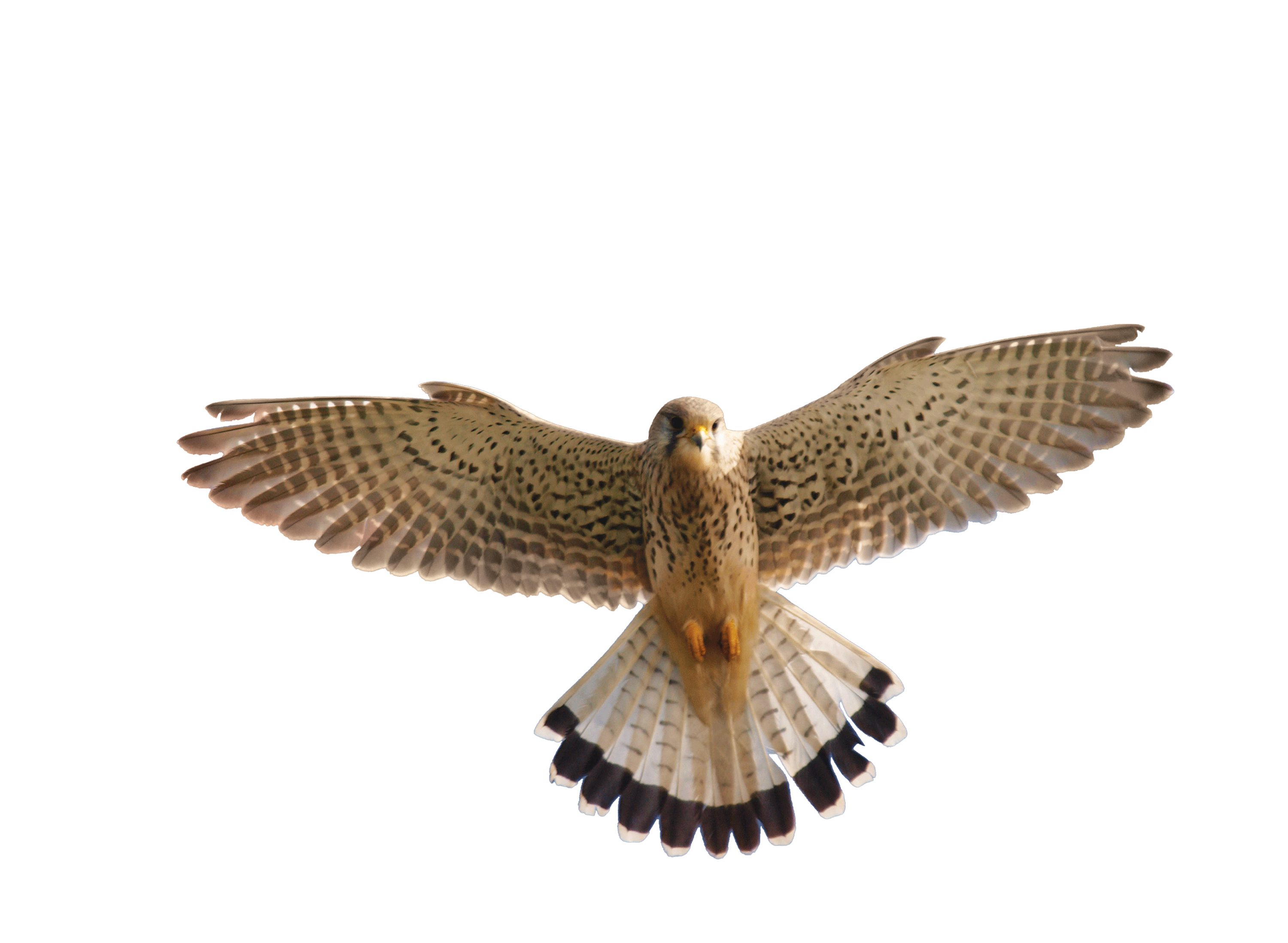
Merlin, Falco columbarius
Not much larger than a thrush, this ‘pocket rocket’ flies swift and low, skimming the ground with frequent glides between bursts of flapping. Has a diet of small birds.
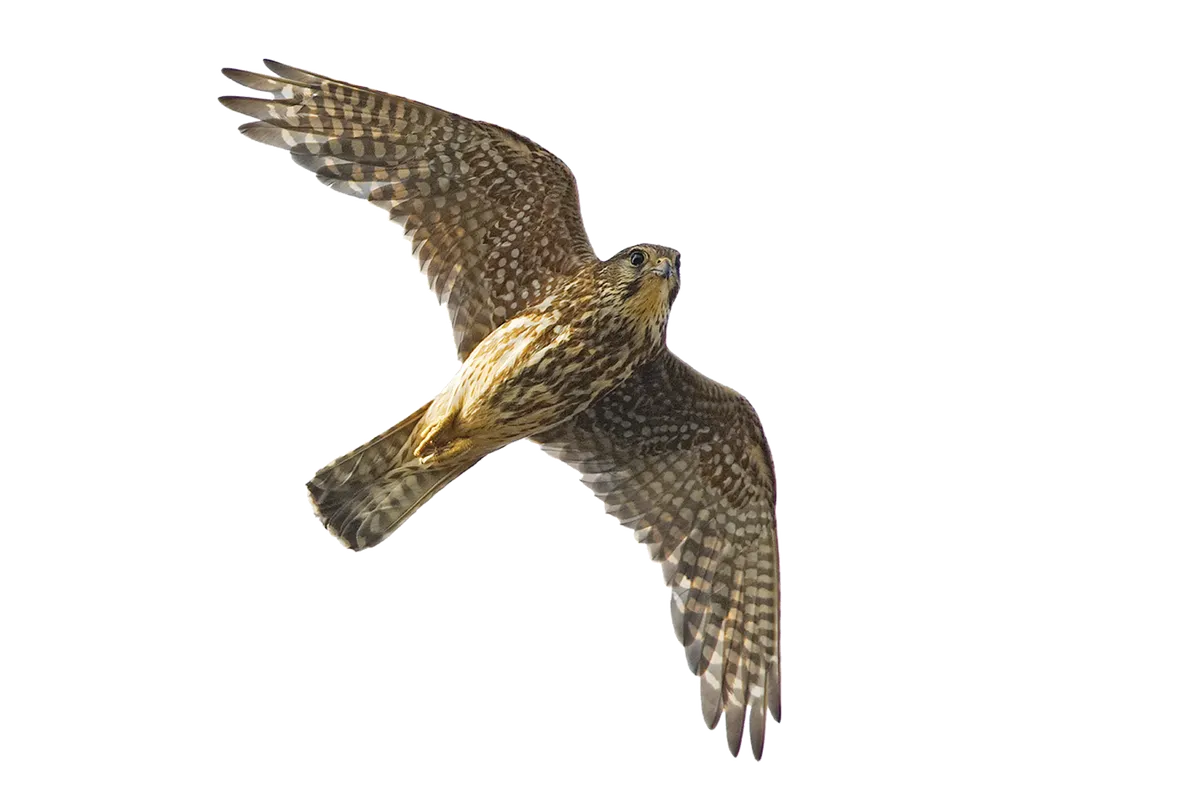
Want more? Our guide to the best books on bird identification and our favourite bird ID charts could help.
More fascinating bird facts
